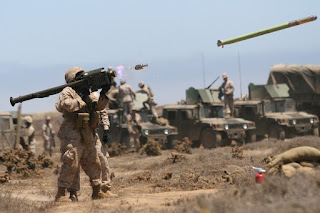Ministry plans to reissue the MANPAD Tender
The Defense ministry plans to re issues a tender to procure man portable air defense systems for the Indian Army. As first the RFI issued in early 2010. Following with weapon system trails in Indian conditions which include high altitude winters and hot weather trails in Mahajan Range. Indian Army almost short listed the Russian Igla S system and forced to perform some tough trials include live air interception. The Results are varied since it failed to hit the target Multiple times.
It's back in 2012, Indian Army invited the Russian Igla S demonstration team to perform live interception. The firing trails started in Mahajan range, The Igla S failed to perform to meet Army criteria. The Igla S Scored only one shot out of four firings. Then Army plans to start the sea trails. where two shots fired only one hits the target. Army told the Russians to repeat the trails giving a chance to Russians to perform better in next time.
During the next trials, Igla S Managed to hit all targets, four targets set for interceptions, and all of them destroyed, However Army find issues in the sights in cold trails, And the Army evaluation team suggested the Russians to modify the Sight lens, Receiver metrics and it's software's. Army gives another chance to Russians to prove the capability of Igla S later 2013.
During 2012, USA offered it's Stinger missiles to Indian MANPAD tender. This forced the Indians to re evaluate the entire contract. India asked the US firm to provide know how technology and asks co producing those units in India. US denied the Indian offer and that's the closure of 2010 RFI.
 |
| Stinger MANPAD |
After pressures from the armed forces, Ministry once again floated the MANPAD tender, This time too the same companies who participated earlier comes again. The new tender added one more condition that's the Transfer of Technology and most of the Firing units could be produced in Indian private companies only.
The trails once again conducted in the same place and results also same, However Army didn't published the actual test results. However the companies who offered the MANPAD systems find difficulty's in the tender. The contenders like Russian Rosboronexport who offered the Igla S, France MBDA who offered the Mistral and the Sweden SAAB who offered RBS 70 NG found there is a lack of transparency in the procurement process. As clearly Indian government wants the technology of the MANPAD's. While the foreigners are not ready to share with Indian Companies.
The above Reason makes the Second RFI also withdrawn, due to the above known issues. Earlier the French MBDA teamed up with Larson and Tubro, and the SAAB joined with state owned PSU Bharath Electronics. They were ready to produce those systems in Indian companies while they didn't provide critical technologies like seekers and firing guidance systems.
This time government stricken the procurement plans under Indian vendors only, Which means 100% of Make in India. This also pave the way to compete new private defense companies like Punj Lloyd and Bharath Forge. Under this new RFI the Armed forces buy entire missiles systems from an Indian company.
Foreign companies who makes the MANPAD's teamed up with Indian vendors may compete in the RFI. The government short list the low price vendor as L1 bidder, and start negotiate for procurement. Indian government ink contract with only Indian companies who also have stakes in foreign companies who offered the MANPAD's. As simply MBDA and L&T jointly proposes the Mistral missile and Army impressed with the performance and price tag. The contract goes to L&T and L&T makes those Missiles in Indian plants.
 |
| Mistral MANPAD |
Indian Army currently using decade old early model of Russian Igla MANPAD systems. Those systems are running behind the schedule. Army wants a man-portable system weighing less than 25 kilograms with
fire-and-forget capability. Other Army requirements include a capability
of engaging aerial targets day or night with an effective range of 6
kilometers.
As per the RFI of MANPADs in 2010, Of the 5,175 missiles and associated equipment sought under the 2010
tender, 2,315 missiles were to be delivered fully assembled and 1,260
partially assembled, with 1,000 missiles to be assembled entirely in
India and 600 to be made at Indian facilities. Associated equipment
includes launchers, sensors, thermal imaging sights, and
command-and-control units.

No comments:
Post a Comment